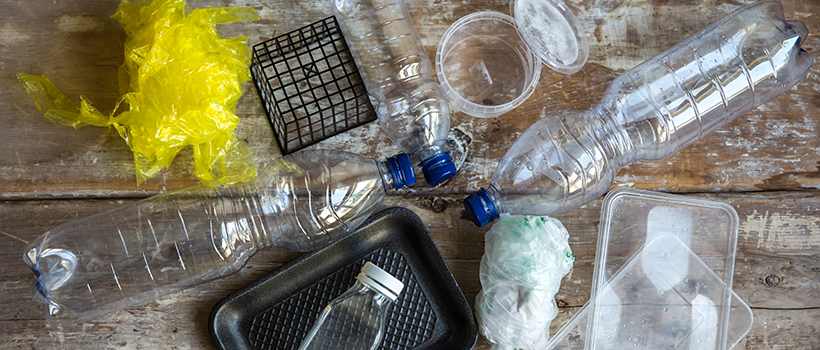
Single-use plastic ban in the European Union
29 September 2022 | Lynneric Potter, Food Packaging Technical Lead
The EU Single-Use Plastics Directive 2019/904 (SUPD) will introduce significant changes for food service packaging. With the EU Member States taking a variety of approaches to put the Directive into their national laws, the UK is also creating its own series of regulations to ban the use of single-use plastic.
The food and drink industry must therefore be proactive in finding alternatives that have the same functionality, are fully compliant, ready to beat the bans.
What does the Single-Use Plastics Directive cover?
The definition of ‘single-use plastic product’ given in the SUPD is:
“a product that is made wholly or partly from plastic and that is not conceived, designed or placed on the market to accomplish, within its life span, multiple trips or rotations by being returned to a producer for refill or re-used for the same purpose for which it was conceived”.
The SUPD also defines ‘plastic’ as:
“a material consisting of a polymer as defined in point 5 of Article 3 of Regulation (EC) No 1907/2006, to which additives or other substances may have been added, and which can function as a main structural component of final products, with the exception of natural polymers that have not been chemically modified”.
In this regard, ‘single-use plastic products are designed to be used once or for a very short period, after which they can be disposed of.’ Some examples of this are already well-known, such as cotton bud sticks and straws but it also extends to plastic cutlery, plates and food containers.
The ban also captures any products that are labelled “bio-based” or “biodegradable”, as there are no specific legal definitions of these terms, and they can be misleading for consumers.
UK – four nations, big variations
Following EU Exit, the UK is not required to bring the EU Directive into national law but the devolved nations are working to reduce their use of single-use plastics and are in the process of creating a series of regulations to ban their use.
Since October 2020, the sales of single-use plastic in England have been heavily restricted including the ban for all businesses, including manufacturers and retailers to sell or supply:
- Straws and cotton buds to end-users
- Drink stirrers to end-users and businesses
Since 3 July 2021, businesses had to stop the supply of:
- Drinks products with single-use plastic straws attached to the packaging
Anyone who sells or supplies these items will be subject to a fine. However, exemptions do apply to the catering industry who can provide straws on request, and to those that have a disability. To note that, paper straws that have plastic-based adhesives, are also exempt and plastic materials that are filled with food at the point of sale in eat-in situations are classed as packaging.
A consultation was held in England between October 2021 and February 2022 to seek views on banning the supply of further single use plastics – plates, cutlery, balloons, polystyrene cups and beverage containers.
A ban on plastic-stemmed cotton buds has been in force in Scotland since October 2019 and since 1 June 2022 it has been an offence for businesses to provide items such as plastic cutlery, plates and stirrers.
The Environmental Protection (Single-use Plastic Products) (Wales) Bill was laid before the Senedd on 20 September 2022. The Bill will make it an offence to supply or offer to supply littered and unnecessary disposable single-use plastic products to consumers in Wales. It provides local authorities with powers to enforce the offence, and includes cutlery, plates, stirrers, drinking straws, plastic stemmed cotton buds, balloon sticks, expanded and foamed extruded polystyrene fast-food containers, expanded and foamed extruded polystyrene cups, polystyrene lids for all cups and fast-food containers, thin plastic single-use carrier bags and all products made of oxo-degradable plastic.
A consultation for the reduction of single-use plastic beverage cups and food containers in Northern Ireland closed in January 2022, but there is yet to be legislation proposed in this area.
Furthermore, additional bans and regulations have already been enacted or are being planned or considered, for example:
- 1 April 2022 - Tax on plastic packaging that contains less than 30% recycled content came into force
- January 2023 - New EPR (Extended Producer Responsibility) system in the packaging waste regulations to replace current PRN system
- Deposit Returns System (DRS) on drinks containers planned for England, Northern Ireland and Wales; DRS due to come into force in Scotland in July 2022 delayed until 16 August 2023
- Consistent Collections legislation to be developed standardising waste collections across England and Wales with potential product labelling implications (feedback to a consultation that closed on 4 July 2021 is being analysed)
- 2025: UK Plastics Pact members targets:
- 100% of plastic packaging to be reusable, recyclable, or compostable
- Take actions to eliminate problematic or unnecessary single-use packaging items through redesign, innovation, or alternative (reuse) delivery models
- 30% average recycled content across all plastic packaging
- 2025 - Target for all plastic packaging, this will be measured nationally
How will single-use plastic be reduced?
It will be necessary for the food and drink industry to seek reusable, recycled alternatives or use other materials. It is expected that there will be a big shift towards paper-based materials for food service and on-the-go products. Regardless of material, any alternatives need to be considered fully, with respect to its life cycle and the environmental impact it has once its primary function is complete.
Considerations for the reusable materials
Consumers are being urged to reuse packaging and use recycled materials to reduce the amount of materials being used. Reusable coffee cups, refillable water containers, and refillable containers for use in supermarkets are all tools being used to encourage the consumer to reuse materials. However, there are impacts on material that is constantly being reused, dish-washed and microwaved:
- Repeatedly reheating food in the same container, for example, may cause degradation of the container and there is the potential to transfer constituents to food during reheating.
- The structure of the container may break down, resulting in handling difficulty, with staining or burning of food during reheating being a potential future food contamination risk.
- Likewise, using drinks containers for hot or cold drinks may result in a build-up of contamination within the container as well as contamination of the outside from the environment and handling.
- Repeatedly screwing a cap on and off a bottle could result in the consumption of small shards of the material which would have built up in the drink bottle.
- Where people are encouraged to reuse bags, they can be at risk of cross-contamination from leaking packs, raw produce, and environmental contaminants.
- The use of refillable containers may impact shelf-life, with packaging compatibility with the product being an additional consideration.
Since reuse packaging may apply to a plastic or alternative material, they should therefore be investigated in terms of integrity and safety.
How can we help?
Packaging experts at Campden BRI know that it is important to consider how a novel or alternative material will perform under different circumstances. For example, if a straw can maintain its strength and structure when it is placed in different liquids, or how paper-based trays and cups respond to grease and moisture, and if reusable containers can withstand the rigours of repetitive washing, decontamination, chilling, and heating.
Campden BRI can help with the transition from single-use plastics evaluating the reuse of materials, and the use of recycled or alternative materials, by assessing strength and integrity.
We can assess material strength by using puncture and elongation test methods, whilst analysing the co-efficient of friction to help understand how the material will run on the line. In addition, we can evaluate the on-the-go functionality of materials, by analysing their ease of handling, their ability to be repetitively washed and reheated, and their capacity to keep food warm. We can also look at grease and moisture resistance and repellence, and barrier testing, as well as taint assessment, to ensure that user experience standards are maintained. In addition, we can ensure that materials are safe for use in relation to food contact and the persistence and decontamination of biological agents, such as, Campylobacter, Clostridium, E. coli, Listeria, Salmonella, Shigella, Cryptosporidium, Giardia, and viruses like Norovirus.
Contact us to discuss your innovative solutions and to discuss the possible impacts of using alternatives to single-use plastics for a range of applications.

About Lynneric Potter
Lynneric has worked at Campden BRI since 1999, and has spent the majority of this time specialising in all things packaging, including supporting members and clients, managing contract projects, and conducting research.
How can we help you?
If you’d like to find out more about switching from single-use plastic packaging, contact our support team to find out how we can help.
Are you a Campden BRI member who attends the MIG meetings?
- If not, you’re missing out on a whole host of exclusive benefits such as learning from industry-leading experts and networking with peers to overcome your challenges.
This blog was first published in 4 February 2022 .







